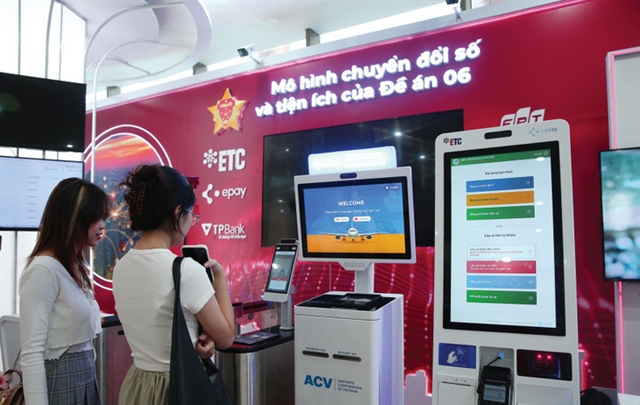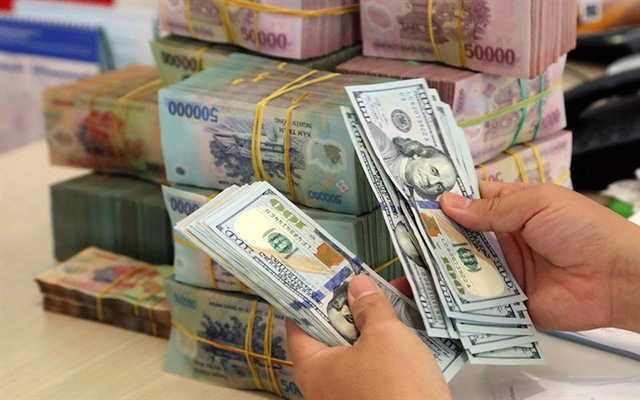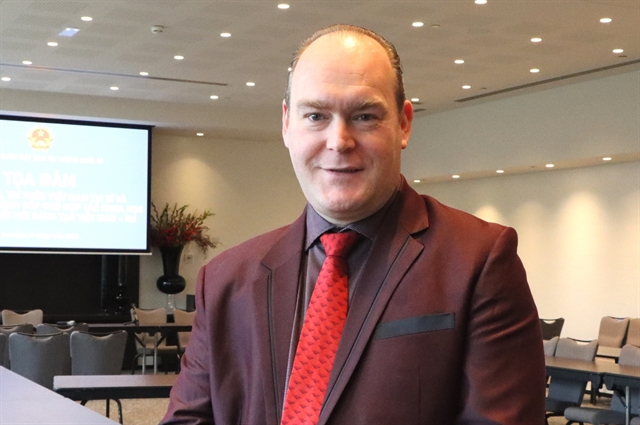 Business Beat
Business Beat

x
 |
Global central banks are rushing to raise interest rates to reign in high inflation. — Photo laodongthudo.vn
Compiled by Mai Hương
The European Central Bank (ECB) joined the global rate hike club by increasing its benchmark rate by 50 basic points on Thursday, its first rate hike in 11 years, in a bid to cool rampant inflation in the eurozone.
Like it did last month, the US Federal Reserve (Fed) is expected to raise its rate by another 75 basic points at its meeting this week.
Stubbornly-high inflation is the main cause driving global central banks into a dash to tighten monetary policy.
The first reading for inflation in the euro area showed a record high of 8.6 per cent in June, much higher than its June forecast of 6.8 per cent for the whole of this year. In a statement on Thursday, the ECB said the rate hike acted as a “key step to make sure inflation returns to its 2 per cent target over the medium term”.
In the United States, inflation also hit a 40-year high of 9.1 per cent in June, stoking expectation of a strong rate hike by the Fed amid concerns of a recession.
Asia has lagged as China and Japan have become the two major economies that are still sticking to a loose monetary policy thanks to their relatively low inflation.
Japan’s latest consumer price index (CPI) report showed a 2.1 per cent from a year before, just above the central bank’s target. Japan decided to keep the rate on the hold while lowering its growth forecast for 2022 and raising its inflation predictions.
Meanwhile, Beijing said it will “pay close attention” to external monetary policy tightening and make a timely assessment of its spillover effects after the ECB raised its rate.
However, prices are ticking up in other parts of Asia and Asian central banks are under pressure to catch up with the global rush to raise rate hikes to tackle rising inflation and defend their weakening currencies.
Singapore and the Philippines unexpectedly announced a tightening policy two weeks ago while market analysts have predicted Indonesia may be the next to hike interest rate.
According to Cấn Văn Lực, a member of the National Fiscal and Monetary Policy Advisory Council, the financial system of a country is often exposed to four risks when major central banks lifted their benchmark rates including a stronger US dollar and other major foreign currencies which may affect foreign trade, rising borrowing cost and debt repayment in foreign currencies, higher risk of default, and increasing capital withdrawal from foreign investors.
The world has witnessed about 80 rate hikes in the first half of this year, seven times higher than the same period of last year.
In Việt Nam, the June inflation rate was kept at 3.37 per cent while the six-month GDP expanded by 6.42 per cent. Despite that, rising inflation remains a top-in-mind risk.
“Inflation pressure from now to the end of the year is quite large,” Lực said, noting the world commodity prices still tend to increase and the risk of imported inflation is high, especially when Việt Nam is heavily dependent on imported inputs.
“The economic growth momentum and the production, business and consumption activities are creating demand-pull inflation pressure.”
He reckoned the exchange rate is under upward pressure (2.5-3 per cent in 2022) while CPI is expected to increase about 3.8-4.2 per cent (or even higher) in 2022 and 4 per cent in 2023.
In the mid-July Economic Update, analysts at VNDirect Securities Co (VDSC) also predict inflation will likely pick up in the second half of this year but believe the Government could be able to keep the whole-year inflation rate at 4 per cent.
“The Government has taken effective solutions to curb inflation this year, including reducing environmental tax on gasoline and adjusting prices of public services. Overall, we maintain our forecast for Việt Nam’s average CPI in 2022 at 3.5 per cent year-on-year,” they said.
That’s why they believe the State Bank of Vietnam will make efforts to maintain an “appropriate” monetary policy and not in a hurry to tighten policy immediately to support economic recovery and market stability.
Any monetary tightening could be taken place in late-Q3 or Q4 this year, and major rate hikes will be limited, around 0.25-0.5 per cent, VDSC analysts forecast.
However, rising US dollar interest rates will put pressure on the foreign debt repayment obligations of the Vietnamese Government and enterprises as well as make it difficult for Việt Nam to raise capital from the international markets.
“According to our estimates, Việt Nam's external debt accounted for 39 per cent of GDP by the end of 2021. In the context of tighter liquidity, it will be difficult for the Vietnamese Government and businesses to mobilise capital in the international market and incur high interest rates,” VDSC analysts said.
Global rate hikes may also trigger a capital fly from Việt Nam. However, this situation has yet to happen so far.
Data on cafef.vn showed forei gn traders were responsible for a net buy value of VNĐ10.4 trillion (US$448 million) in the second quarter of Việt Nam’s stock market, a positive sign after they sold a record net of VNĐ62.4 billion in 2021 and net sold VNĐ7 trillion in the first quarter.
According to Nguyễn Thế Minh, head of the Individual Customer Analysis Unit at Yuanta Securities Vietnam, the Fed's interest rate hikes have hurt emerging and frontier stock markets over the past time, driving down many indexes in these markets. The amount of money withdrawn from Asian markets was largely due to concerns that the Fed will continue hiking interest rates and affect the exchange rate.
“The Fed rate hike is still likely to affect the market, but history shows that, in the early stages, the Fed rate hike will have the biggest impact on the equity market. The next-time impact will decrease and gradually become insignificant,” Minh said. — VNS




